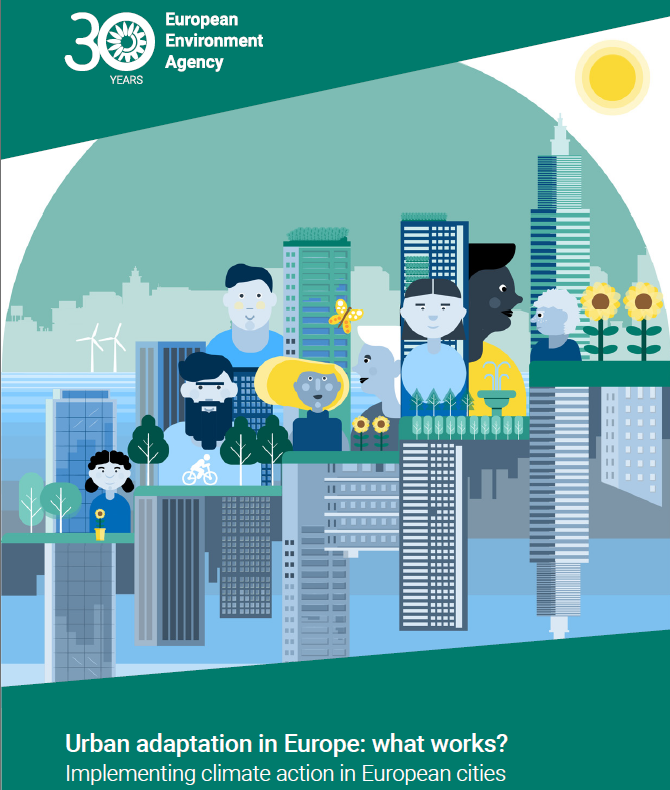Urban adaptation in Europe: what works?
This EEA report provides an overview of adaptation actions in place in European cities, covering the different types of actions and the enabling conditions for successful interventions.


Drawing from existing European Environment Agency (EEA) publications, a 2022 survey of EEA member states, city interviews, Covenant of Mayors and CDP databases, and studies of local climate action plans, this study looks at the main types of adaptation measures adopted by European cities. It also provides certain examples from outside the continent where relevant, and replicable. It analyses the enabling factors for the implementation of these measures, in order to inform EU and local policy makers and officials.
The reports starts by looking at identified urban climate risks, and the political landscape. Among the types of measures studied are governance and institutional measures, economic and finance measures, physical and technological measures, nature-based solutions and ecosystem-based approaches, and knowledge and behavioural change. Rather than a hazard-based approach to classifying actions, the report looks at overall resilience. It spotlights « areas of opportunity » for adaptation actions, where broader implementation of actions can be encouraged: urban agriculture, placemaking (reclaiming urban spaces for people and communities) and cutlural heritage.
The report starts with the observation that cities across the continent have highly diverse contexts and capacities, being at different stages of adaptation action and readiness.
In terms of types of actions reported, physical and technical measures are the most widely used by cities, followed by nature-based solutions and governance measures. The interconnectedness between different measures is highlighted as an important factor in maximising effectiveness. 91% of local adaptation plans already include NbS. The reports highlights the importance of combining nature-based and ecosystemic approaches with others, to fully meet urban adaptation needs.
When it comes to enabling factors citizen engagement is the most reported, while sustained availability of funding and budgetary capacity are the most reported barriers. The report’s findings call for more effective use of knowledge and data, more comprehensive monitoring and evaluations of adaptation measures and peer-to-peer exchanges.